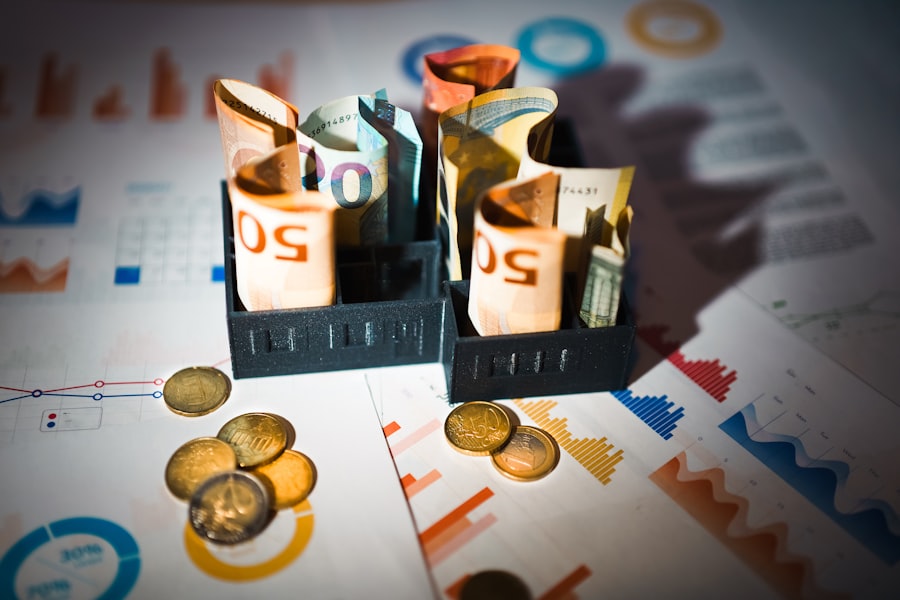In an increasingly digital world, budgeting apps have emerged as essential tools for managing personal finances. These applications provide users with a streamlined way to track their income, expenses, and savings goals, all from the convenience of their smartphones or tablets. The rise of budgeting apps can be attributed to the growing need for financial literacy and the desire for individuals to take control of their financial futures.
With user-friendly interfaces and a plethora of features, these apps cater to a wide range of financial situations, making them accessible to both novices and seasoned budgeters alike. The appeal of budgeting apps lies not only in their functionality but also in their ability to provide real-time insights into one’s financial health. Unlike traditional methods of budgeting, which often involve pen and paper or complex spreadsheets, budgeting apps offer a dynamic approach that allows users to visualize their financial data instantly.
This immediacy fosters a greater awareness of spending habits and encourages users to make informed decisions about their finances. As technology continues to evolve, the capabilities of these apps are expanding, offering features such as automated expense tracking, goal setting, and even investment management, making them indispensable tools for modern financial management.
Key Takeaways
- Budgeting apps help users track their income and expenses to better manage their finances.
- Setting financial goals with a budgeting app can help users prioritize their spending and saving.
- Tracking expenses and income through a budgeting app allows users to see where their money is going and make adjustments as needed.
- Creating a budgeting plan with a budgeting app helps users allocate their income towards different categories such as bills, savings, and discretionary spending.
- Utilizing budgeting app features such as bill reminders, goal tracking, and spending analysis can help users stay on top of their financial health.
Setting Financial Goals with a Budgeting App
Setting SMART Goals
Users can set specific, measurable, achievable, relevant, and time-bound (SMART) goals that align with their financial aspirations. For instance, an individual may aim to save $5,000 for a vacation within the next year. By inputting this goal into the app, users can break it down into manageable monthly savings targets, which the app can then track over time. This feature not only provides motivation but also helps users stay accountable to their financial objectives.
Categorizing Goals
Many budgeting apps allow users to categorize their goals into short-term and long-term aspirations. Short-term goals might include saving for a new gadget or paying off a credit card, while long-term goals could encompass retirement savings or purchasing a home. By visualizing these goals within the app, users can prioritize their spending and make informed choices that align with their financial plans.
Flexibility and Adaptability
The ability to adjust these goals as circumstances change—such as receiving a raise or facing unexpected expenses—ensures that users remain flexible and responsive in their financial planning.
Tracking Expenses and Income

One of the most powerful features of budgeting apps is their ability to track expenses and income seamlessly. Users can link their bank accounts and credit cards directly to the app, allowing for automatic transaction imports. This automation eliminates the tedious task of manually entering each transaction and reduces the likelihood of errors.
As transactions are recorded in real-time, users gain immediate visibility into their spending patterns, enabling them to identify areas where they may be overspending or where they can cut back. In addition to automatic tracking, many budgeting apps offer customizable categories for expenses. Users can create specific categories such as groceries, dining out, entertainment, and utilities, allowing for a more granular analysis of spending habits.
For example, if a user notices that they are consistently overspending in the dining out category, they can take proactive measures to reduce those expenses by cooking at home more often or seeking out less expensive dining options. This level of detail empowers users to make informed decisions about their finances and encourages them to adopt healthier spending habits.
Creating a Budgeting Plan
| Metrics | Data |
|---|---|
| Income | 5000 |
| Expenses | 3000 |
| Savings | 2000 |
Crafting a comprehensive budgeting plan is essential for achieving financial stability and reaching long-term goals. Budgeting apps simplify this process by providing templates and tools that guide users through the creation of a personalized budget. Users can start by inputting their total income and then allocate funds to various expense categories based on their priorities and spending habits.
This structured approach helps ensure that all necessary expenses are accounted for while also allowing for discretionary spending. Furthermore, many budgeting apps incorporate features that allow users to set limits on each category. For instance, if a user allocates $300 for groceries each month but finds themselves consistently exceeding that amount, the app can send alerts when they approach their limit.
This proactive approach encourages users to stay within their budgetary constraints and fosters a sense of discipline in managing finances. Additionally, some apps offer suggestions based on historical spending data, helping users make informed decisions about how much to allocate to each category.
Utilizing Budgeting App Features
The functionality of budgeting apps extends far beyond basic tracking and planning; they often come equipped with a variety of features designed to enhance the user experience and improve financial management. One notable feature is the ability to set up recurring transactions for regular expenses such as rent or subscriptions. By automating these entries, users can save time and ensure that they never miss a payment due date.
Another valuable feature is the integration of financial education resources within many budgeting apps. These resources may include articles, videos, or interactive tools that help users understand key financial concepts such as credit scores, debt management, and investment strategies. By providing educational content alongside practical tools, budgeting apps empower users to make informed decisions about their finances and develop a deeper understanding of personal finance principles.
Analyzing Financial Trends

A significant advantage of using budgeting apps is the ability to analyze financial trends over time. Many applications offer visual representations of spending patterns through graphs and charts, allowing users to see how their financial habits evolve month by month or year by year.
Additionally, some budgeting apps provide benchmarking features that allow users to compare their spending habits against national averages or similar demographic groups. This comparative analysis can be enlightening; it may reveal that a user is spending significantly more on dining out than others in their income bracket. Such insights can motivate users to reevaluate their priorities and make more conscious choices about where they allocate their funds.
Adjusting Your Budgeting Plan
Flexibility is key when it comes to effective budgeting, and budgeting apps facilitate this adaptability by allowing users to adjust their plans as needed. Life is unpredictable; unexpected expenses such as medical bills or car repairs can arise at any moment. A good budgeting app enables users to modify their budgets in real-time without losing sight of their overall financial goals.
For instance, if an individual needs to allocate additional funds toward an emergency expense, they can easily adjust other categories accordingly. Moreover, many apps encourage regular reviews of one’s budgetary plan. Users can set reminders to revisit their budgets monthly or quarterly to assess progress toward goals and make necessary adjustments based on changing circumstances.
This proactive approach not only helps maintain accountability but also fosters a habit of continuous improvement in financial management.
Tips for Success with Budgeting Apps
To maximize the benefits of budgeting apps, users should adopt certain best practices that enhance their experience and effectiveness in managing finances. First and foremost, consistency is crucial; regularly updating transactions and reviewing budgets ensures that users remain engaged with their financial plans. Setting aside dedicated time each week or month for this purpose can help establish a routine that promotes accountability.
Additionally, users should take advantage of all available features within the app. Exploring educational resources, utilizing goal-setting tools, and engaging with community forums (if available) can provide valuable insights and support from others on similar financial journeys. Finally, it’s essential for users to remain patient with themselves as they navigate the learning curve associated with budgeting apps; developing sound financial habits takes time and practice.
By embracing these strategies and leveraging the capabilities of budgeting apps effectively, individuals can cultivate healthier financial habits that lead to greater stability and success in achieving their long-term financial goals.
If you are looking for a comprehensive financial planning tool to complement your budgeting app, you may want to check out Valapoint’s article on the best financial planner apps here. This article provides a detailed overview of various financial planning apps that can help you track your investments, retirement savings, and overall financial goals. By combining a budgeting app with a financial planner app, you can take control of your finances and work towards a secure financial future.
FAQs
What is a budgeting app?
A budgeting app is a software application designed to help individuals or businesses manage their finances by tracking income, expenses, and savings goals.
How does a budgeting app work?
Budgeting apps typically allow users to input their income and expenses, categorize transactions, set budget limits for different categories, and track their progress towards financial goals. Some apps also offer features such as bill reminders, financial reports, and investment tracking.
What are the benefits of using a budgeting app?
Using a budgeting app can help individuals or businesses gain better visibility into their financial situation, make more informed spending decisions, and stay on track with their savings goals. It can also save time and effort compared to manual budgeting methods.
Are budgeting apps secure?
Most reputable budgeting apps use encryption and other security measures to protect users’ financial data. It’s important to choose a well-established app with a good track record for security and privacy.
Are budgeting apps free to use?
Many budgeting apps offer a free version with basic features, while others may require a subscription or one-time purchase for access to more advanced functionality. It’s important to review the pricing and features of different apps to find one that meets your needs and budget.
Can a budgeting app help me save money?
Yes, a budgeting app can help users save money by providing insights into their spending habits, identifying areas where they can cut back, and setting savings goals. Some apps also offer features to help users track and grow their savings over time.


